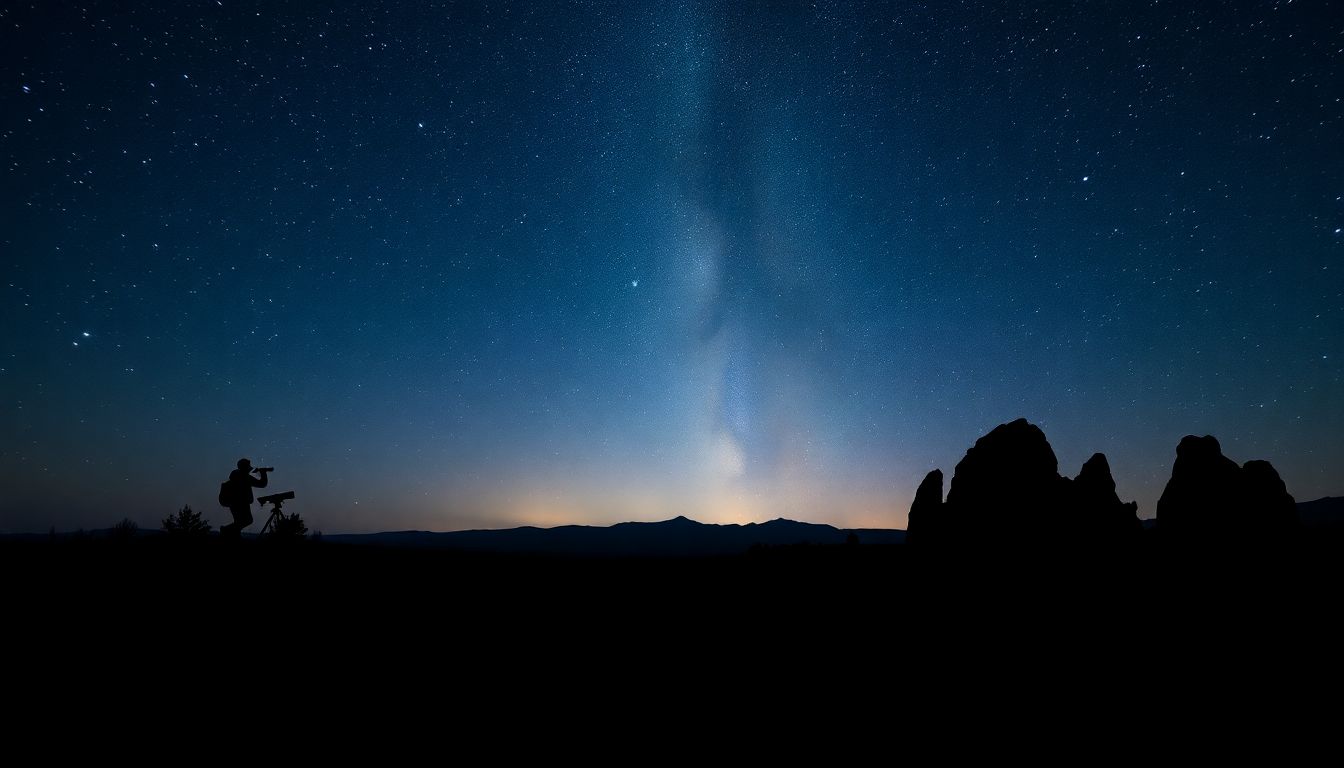
How to Find Clear Night Skies for Stargazing
Introduction
Imagine lying back on a cool night and spotting hundreds of stars shining bright above. Stargazing is one of the most peaceful ways to connect with nature and learn about the universe. Plus, it’s a fantastic hobby for those wanting to see planets, meteor showers, or even distant galaxies. But here’s the catch: weather and light can spoil those perfect views. Clouds, moonlight, and city lights make it harder to see the night sky clearly. This guide gives you easy, practical steps to find the best spots and times for stargazing.
Understanding the Basics of Clear Night Skies
What Defines a Clear Night Sky?
A clear night doesn’t just mean no clouds. It’s about the sky being mostly open with little humidity or haze blocking your view. When the sky is cloudless and the air is dry, your chances of seeing stars skyrocket. Light pollution and weather stability are also key. Less artificial lighting and calm atmospheres make the perfect sky.
Factors Influencing Visibility
Many elements change how well you can see the stars. Humid air or dust can blur the view, making stars look dim or fuzzy. The moon’s brightness also plays a role; a full moon can wash out faint stars and detail. Weather patterns, like storm fronts or high-pressure systems, influence how clear the sky stays. Geography matters too—higher elevations and open fields give cleaner views with less haze and pollution.
The Role of Light Pollution
Bright city lights drown out the stars, turning the night sky into a dull gray. This is called light pollution. To see the best stars, visit places far from big cities. Some areas are officially named Dark Sky Places—these parks and reserves protect the night sky from excessive artificial light. They are the best spots for pure, star-filled views.
Tools and Resources for Finding Optimal Stargazing Locations
Using Weather Forecasts Effectively
Checking the weather is your first step. Use websites like Clear Dark Sky or Weather.com for detailed forecasts. Look for cloud cover percentages, ideally less than 30%, and check humidity levels. Some websites give “Limiting Unuset Light” scores that show the darkness level of the sky expected. These help you pick nights with the best conditions.
Mapping Light Pollution
Light Pollution Map, Dark Site Finder, and Globe at Night are handy tools to see how light spread affects different areas. They show which spots have the least artificial light and are best for stargazing. Remote parks or designated dark sky reserves are top choices because they block nearby city glow.
Smartphone and Apps for Stargazing Planning
Apps make planning easier. Stellarium, Star Walk, and Sky Guide can tell you when the sky will be clear and what celestial events are happening. These tools can also help you find constellations and planets for better exploration. Use a combination of apps and websites to craft your perfect night out.
Practical Strategies to Discover Clear Skies
Timing Your Stargazing Session
Pick seasons when the weather tends to be dry and cold—many regions see less cloudiness in winter months. Also, plan your visits after sunset when darkness settles but before the sky starts to brighten again in the pre-dawn hours. The middle of the night is usually most stable.
Choosing the Right Date
Avoid full moon nights if you want darker skies. The moon’s light can wash out stars and planets. Check moon phases online and pick nights during new moon or crescent phases. Keep an eye on weather forecasts for several days ahead so you can stay flexible.
Selecting the Best Location
Distance from city lights is crucial. Rural areas or high-altitude spots often have clearer views. Look for places with minimal artificial lighting, good accessibility, and safety. Parks, open fields, or mountain overlooks are usually perfect choices.
Maximizing the Stargazing Experience
Preparing for the Night
Pack essentials like blankets, insect repellent, and a red flashlight. Red light doesn’t ruin night vision like white light. Check the weather before heading out. Unexpected clouds or rain can destroy your plans. Be ready to adapt on the spot.
Joining Local Stargazing Communities
Find groups or clubs nearby. Many cities have astronomy clubs that host star parties—organized gatherings for good viewing. These groups offer great advice, shared equipment, and friendly company. Attending events adds a new layer of fun and learning.
Ethical Stargazing Practices
Always respect protected areas and stay on designated paths. Avoid using bright lights or street lamps during your session. Remember to keep the area clean—leave no trace. Protecting our dark skies helps everyone enjoy stars for years to come.
Conclusion
Finding clear night skies takes preparation. Start by understanding weather conditions and light pollution. Use websites and apps to plan your outings around the best times. Choose locations far from city glow and stay flexible with your date. With some planning, you’ll enjoy breathtaking views and unforgettable nights under the stars. Keep tracking the weather and moon phases, and your stargazing adventures will only get better. Keep looking up—beautiful skies await.

